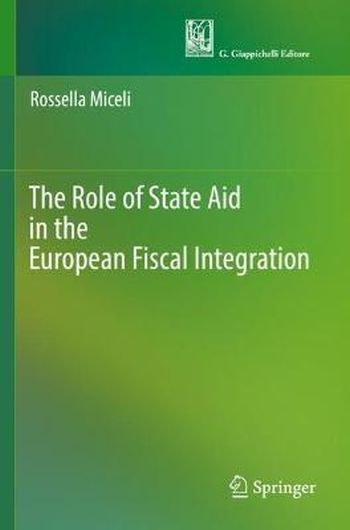
This book analyzes the issue of European fiscal State aid in order to provide insights into the related evolution prospects and legal problems. State aid has assumed a central position in the field of taxation, becoming the most important instrument of European legal integration, especially in the area of direct taxes. This is the result of major regulatory and interpretative development, which has altered the initial European and national balances in the face of globalization and the problems of the new economy. In this context, the scope and objectives of State aid have progressively broadened, encompassing a significant level of both positive and negative integration of European national tax systems.